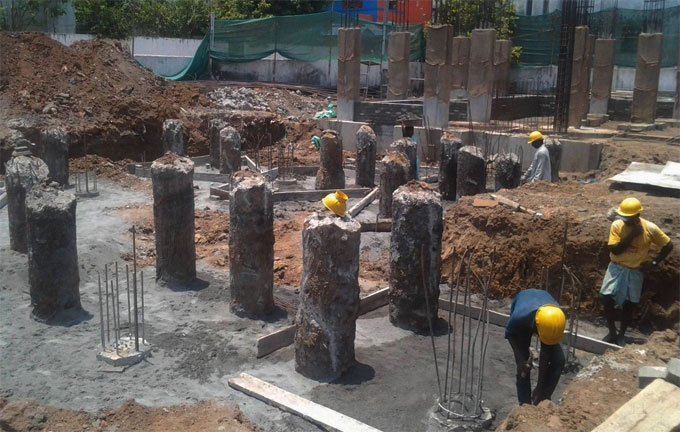
Advantages and Disadvantages of Pile Foundation
Piles can be made of metal, cement, or timber. Solid pile is precast, which can be found at the building site or at an assembling point. The piles are crashed into the ground vertically or at a foreordained edge to the vertical when establishing the pile frameworks. A pile hammer is utilized to drive the piles into the ground uprooting the soil in equivalent volume to the mass of the pile.
The soil around the piles gets conservative as the removed soil particles are constrained into the adjoining spaces in the mass of soil bringing about the densification of the encompassing mass of soil.
The pile utilized for compacting the bordering soil is known as a compaction pile. The bearing limit of a precast pile increment because of the weight produced by the encompassing mass of compacted soil.
The poor waste characteristics of immersed, strong or silty soil make it inconceivable for the soil to densify around the pile when it is crashed into such ground. The water in the pores makes it hard for the dislodged soil particles to enter the void spaces.
This activity produces worries in the mass of soil close to the pile when it is crashed into the ground, and the anxieties are a result exclusively made by the water in the pores. Therefore, the pore water pressure diminishes the bearing limit of the soil encompassing the pile.
The soil around the piles is remolded and will lose some considerable basic strength. Basically, the aftereffect of driving a pile in silty, strong, or soaked soils is a diminishing in the bearing strength. In any case, with time, the remolded soil will recapture the lost strength as the upset soil particles are reoriented (what's known as thixotropy), which emerges from the combination of the masses.
The Advantages Of Using Piles:
1. They can be precast to details.
2. They can be pre-made into any length, shape, and size and utilized nearby in this manner, lessening the consumption time.
3. A screw pile foundations bearing limit increment when it is crashed into the granular soil in light of the fact that the nearby mass of soil is compacted around the pile.
4. The piles give a perfect and flawless introduction in this way requiring least oversight and less extra room.
5. The piles can be utilized in places that don't permit boring openings in view of acquiring and finding pressurized underground water tables.
6. They are an extraordinary decision when working over water similar to the case with piles in breakwaters and wharf structures.
The Disadvantages Of Using Pile:
1. Satisfactory fortification of the precast solid piles is important as this assists with making them bear worries of being shipped to the area and when crashed into the ground.
2. Satisfactory pre-arranging is fundamental for the best possible treatment of the pile when crashed into the ground.
3. The way toward driving piles requires overwhelming hardware.
4. It is difficult to decide the necessary length of the pile ahead of time; along these lines, the procedure will include the expansion of more lengths or cutting off of the abundance, and this builds the task cost.
5. The piles are not reasonable for soils with poor waste. If the driving is organized and staged appropriately, the hurling of the soil or a previously determined pile springing up when the enhanced one is pushed in may happen.
6. Driving the piles creates vibrations that can influence the respectability of the foundations of neighboring structures.
All in all, piles are valuable just when in fitting situations. Else, they bring more difficulty than worth.


